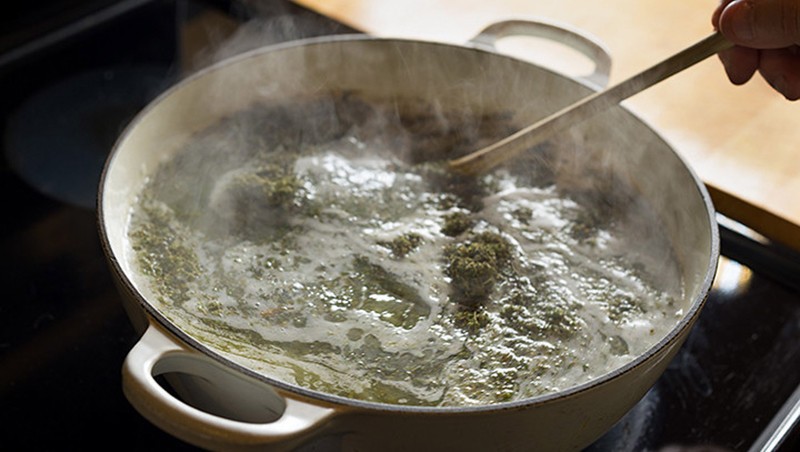The re-entrance of marijuana into the main stream consciousness has come on the back of revelations that the herb has massive cancer curing potential. The cannabinoids, molecules within the plant, enter the human body on consumption and bind with receptors that are already in place. Our bodies are made to handle this stuff.
The resulting endocannabinoids that are released by the human body perform a variety of positive effects, including regulation of cell growth. The fact that we have receptors for the chemical seems to indicate that we are evolved to eat the plant and the positive impact the chemicals have on our system further implies that.
One of the most popular ways to consume the plant is by smoking it, but the excess chemicals from the fire can cause unnecessary damage. Rick Simpson, a pioneer in the medical cannabis field, has mastered the art of cannabis oil production and released his technique to the world for free.
You can support Rick on his website; here is a condensed version of the process of making hemp oil.
Start with one ounce of dried herb. One ounce will typically produce 3-4 grams of oil, although the amount of oil produced per ounce will vary strain to strain. A pound of dried material will yield about two ounces of high quality oil.
IMPORTANT: These instructions are directly summarized from Rick Simpson’s website. Be VERY careful when boiling solvent off, the fumes are extremely flammable. AVOID smoking, sparks, stove-tops and red hot heating elements. Set up a fan to blow fumes away from the pot, and set up in a well-ventilated area for whole process.
1. Place the completely dry material in a plastic bucket.
2. Dampen the material with the solvent you are using. Many solvents can be used [solvent-free option]. You can use pure naphtha, ether, butane, 99% isopropyl alcohol, or even water. Two gallons of solvent is required to extract the THC from one pound, and 500 ml is enough for an ounce.
3. Crush the plant material using a stick of clean, untreated wood or any other similar device. Although the material will be damp, it will still be relatively easy to crush up because it is so dry.
4. Continue to crush the material with the stick, while adding solvent until the plant material is completely covered and soaked. Remain stirring the mixture for about three minutes. As you do this, the THC is dissolved off the material into the solvent.
5. Pour the solvent oil mixture off the plant material into another bucket. At this point you have stripped the material of about 80% of its THC.
6. Second wash: again add solvent to the mixture and work for another three minutes to extract the remaining THC.
7. Pour this solvent oil mix into the bucket containing the first mix that was previously poured out.
8. Discard the twice washed plant material.
9. Pour the solvent oil mixture through a coffee filter into a clean container.
10. Boil the solvent off: a rice cooker will boil the solvent off nicely, and will hold over a half gallon of solvent mixture. CAUTION: avoid stove-tops, red hot elements, sparks, cigarettes and open flames as the fumes are extremely flammable.
11. Add solvent to rice cooker until it is about ¾ full and turn on HIGH heat. Make sure you are in a well-ventilated area and set up a fan to carry the solvent fumes away. Continue to add mixture to cooker as solvent evaporates until you have added it all to the cooker.
